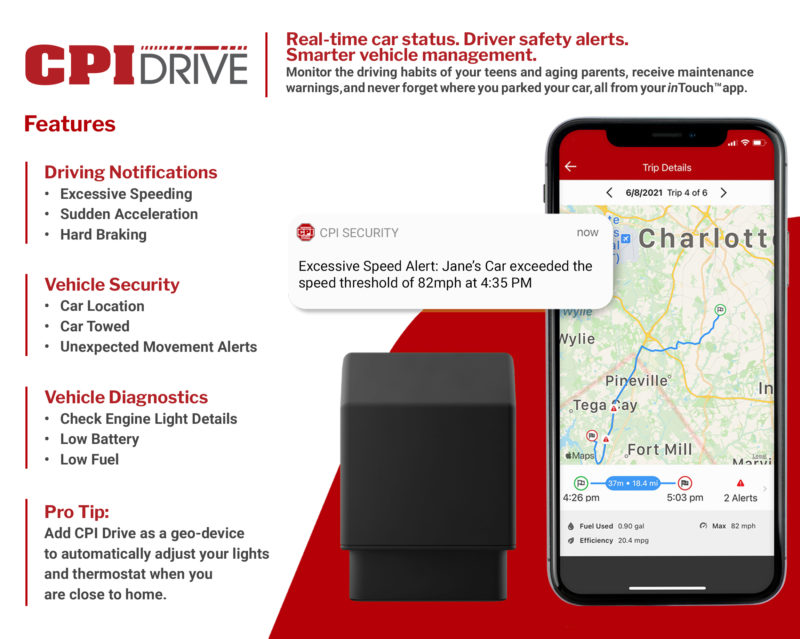We all want to believe we’re good drivers, but as attentive as we think we might be, there are a lot of distractions on the road today. From 2019-2020 alone, the rate of traffic-related accidents and deaths rose significantly in the U.S.*
The good news is that there are simple steps every driver can take to reduce the risk of accidents when behind the wheel. In keeping our commitment to making life easier and safer, we’ve outlined road safety tips for you and your loved ones below.
Safe Driving Tips All Drivers Should Know
You can improve road safety while the car is still in park:
- Do a quick scan for issues like low tires, fluid leaks, and broken headlights or taillights.
- Check all mirrors and seat positioning, and make any adjustments while the car is still in park.
- Don’t drive distracted – turn the volume down, ask passengers to be courteous, and put your phone away. If you’re using it for navigation, secure it where you can easily see the screen.
And before you leave, check weather, traffic conditions, construction closures, and other info about your route.
CPI Safety Practice: CPI Drive integrates with the CPI inTouch™ app for 24/7 vehicle awareness, so you can see warnings like low fuel or battery life before you ever leave the house.
To learn more about CPI Drive, give us a call at 833-423-2601.
Common Traffic Laws and Driving Rules
Whether you’re a new driver or just want to brush up, these basic rules of the road apply nearly everywhere in the U.S.:
- Always wear your seat belt and ensure that your passengers are properly secured in their seat belts before you start driving.
- Drive on the right side of the road (the steering wheel is on the left)
- Obey all posted speed limits and signs
- White lines separate traffic going in the same direction, while yellow lines separate cars moving in opposite directions
- Dashed lines mean you can change lanes or pass when it’s safe, while solid or double lines mean you should stay in your lane
- Pass in the left lane only; otherwise, use the right lanes and maintain speed
- Always yield to pedestrians and come to a full stop for school buses with flashing lights
- Look out for motorcycles and bicyclists
- Always pull over to let emergency vehicles pass
CPI Safety Practice: Don’t create a distraction by overusing your car horn. A quick beep to let someone know the light has changed is fine, but otherwise, save the horn for true danger warnings.
Defensive Driving Techniques and Tips to Practice
Defensive driving is the practice of using driving strategies that minimize risk and help avoid accidents. Good defensive drivers keep this in mind when behind the wheel:
- Look far ahead and maintain a safe distance, with plenty of space to anticipate any issues ahead
- Stay aware of what’s happening in front of you, to the sides, and even behind
- Plan your escape – practice deciding what you’ll do if another driver or obstacle is suddenly in your way
- Maintain a following distance of about one car length per 10 miles of speed
- Reduce distractions like people, pets, music, screens, and even bright dashboard lights
CPI Safety Practice: If you want to see if a driver in your household needs a refresh on defensive driving, CPI Drive monitors habits like excessive speeding, sudden acceleration, and hard braking.
Highway Driving Tips Everyone Should Know
Highways can be intimating. These driving tips can make the journey less stressful:
- If you’re just learning or refreshing your skills, pick a time when there’s little traffic and the weather is good.
- The right lanes are the best place for slower speeds while getting the necessary practice in real-time.
- Leave plenty of space when changing lanes, and practice checking all mirrors and blind spots to see who’s where.
- Always use your turn signals when merging or changing lanes. Even if no one’s around, it’s a good habit.
- Be decisive, not hesitant. Once you’ve figured out the safest point, make your move. The highway is safer when each driver understands what the others are doing.
CPI Safety Practice: Find an interstate or other highway with longer exit and merge ramps, and practice integrating into the flow of traffic when there’s plenty of room to maneuver.
What to Do After an Accident
Even a minor fender bender can be scary, and bigger collisions can be downright traumatic. A bit of planning can help drivers stay safe and get the help they need if an accident happens.
- Get to a safe place. If the car is still drivable, put on your emergency flashers and pull over to a safe, well-lit place. Whatever you do, don’t “leave the scene.”
- Check on passengers. Make sure all passengers are OK. Keep everyone where it’s safe and let first responders remove passengers to assess any injuries.
- If there’s any concern at all about injuries, call 911. Stay on the line with dispatch till they say it’s OK to hang up.
If it appears the other driver is uninjured and you can speak to them in a safe location, it’s OK to begin exchanging information like contact details, driver’s license and plate numbers, vehicle and insurance info, etc.
CPI Safety Practice: Don’t admit to fault or make cash deals instead of filing an insurance claim. You could face major expenses later on, even if the other driver was at fault or doesn’t have insurance.
Safe Driving Tips for Every Stage of Life
Many adults find themselves on “automotive autopilot,” especially if they’ve been driving daily for years – or even decades. But safety on the road matters even more for some people.
- Little ones: Car seat safety is critically important, and safety needs change quickly at this age. Local fire departments are happy to offer demonstrations that teach you to install and use your child’s car seat safely and effectively.
- Teens: Education, establishing a routine, and practice are essential for teen driving and road safety. While there are many resources out there for teen drivers and parents of teen drivers, the more practice they get, the better.
- Seniors: If you’re worried that a loved one has forgotten how to drive safely or has health issues that affect their driving, it may be time for a compassionate but firm discussion.
Other Driving Safety Facts to Consider
A well-maintained vehicle is key to safety on the road. Follow manufacturer recommendations for oil changes and other maintenance intervals, and stay on top of state-mandated inspections. If possible, you should also get recommendations and estimates before having work done.
Keep a first-aid kit, tool kit, and emergency preparedness items in your car. Besides basics like a spare tire and jack, it’s good to have:
- Jumper cables
- A flashlight and batteries
- Reflective gear
- Drinking water and nonperishable foods
- Weather protection
Finally, consider adding a vehicle management tool like CPI Drive to your smart security system. It can help you see a car’s diagnostics, driving behaviors, and vehicle security right from the comfort of home – and help you keep your whole family safe on the road.
For similar safety tips, and for more information on everything home, smart security, and innovation, visit the CPI blog to learn more.
Sources:
*Insurance Information Institute, “Facts + Statistics: Highway Safety.”





